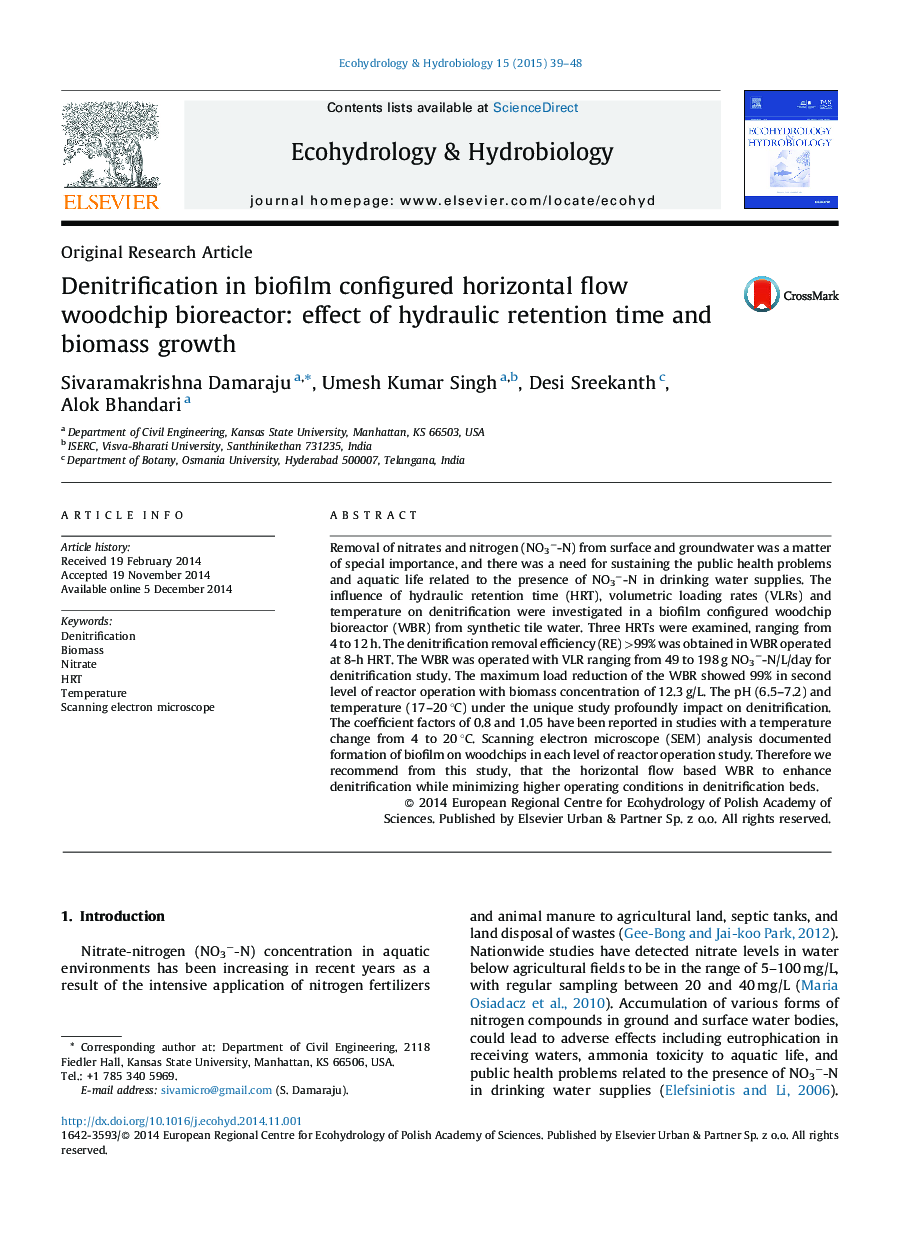| Article ID | Journal | Published Year | Pages | File Type |
|---|---|---|---|---|
| 4388018 | Ecohydrology & Hydrobiology | 2015 | 10 Pages |
Removal of nitrates and nitrogen (NO3−-N) from surface and groundwater was a matter of special importance, and there was a need for sustaining the public health problems and aquatic life related to the presence of NO3−-N in drinking water supplies. The influence of hydraulic retention time (HRT), volumetric loading rates (VLRs) and temperature on denitrification were investigated in a biofilm configured woodchip bioreactor (WBR) from synthetic tile water. Three HRTs were examined, ranging from 4 to 12 h. The denitrification removal efficiency (RE) >99% was obtained in WBR operated at 8-h HRT. The WBR was operated with VLR ranging from 49 to 198 g NO3−-N/L/day for denitrification study. The maximum load reduction of the WBR showed 99% in second level of reactor operation with biomass concentration of 12.3 g/L. The pH (6.5–7.2) and temperature (17–20 °C) under the unique study profoundly impact on denitrification. The coefficient factors of 0.8 and 1.05 have been reported in studies with a temperature change from 4 to 20 °C. Scanning electron microscope (SEM) analysis documented formation of biofilm on woodchips in each level of reactor operation study. Therefore we recommend from this study, that the horizontal flow based WBR to enhance denitrification while minimizing higher operating conditions in denitrification beds.
